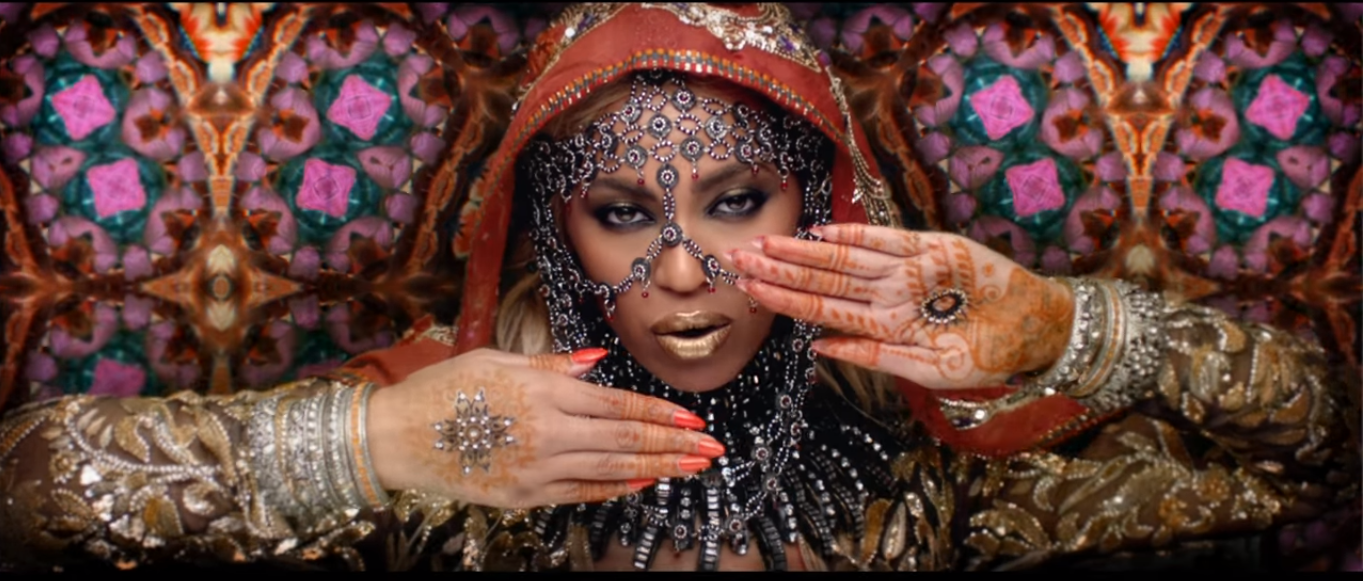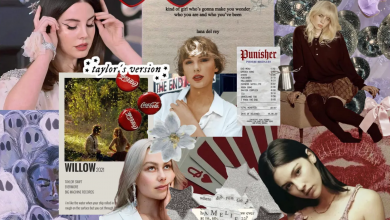Why Coldplay’s “Hymn for the Weekend” is Not a “Celebration” of Indian Culture

Image courtesy of Coldplay Official, available under fair use.
The music video for Coldplay’s newest song—Hymn for the Weekend—has set fire to the Internet with a very heated debate about cultural appropriation. The video features Chris Martin pining for “Bollywood star” Beyoncé on the vibrant streets of Mumbai, amidst, peacocks, orange-robed sadhus and children throwing colored powder in the air . As somebody who has been besotted with the band since my angsty teenage years, I was more than a little heartbroken over the video. My culture should not be the backdrop of a white “indie pop” band’s sickly love song.
From the very first frame of the video, I could tell that watching it would be an excruciating experience. Cultural appropriation is not only about people wearing bindis and tribal tattoos at Coachella. It’s an issue that highlights a deeper problem—the theft of cultural identities and practices without really understanding the significance behind them.
It is about Indian women being mocked and oppressed for wearing a bindi, but Selena Gomez being called sexy with one on. It is about Coldplay thinking they can just use Holi, a festival with religious importance, as a pretty backdrop for their music video. First of all, it’s silly to think that Holi is simply throwing coloured powder in the air, and that gathering a group of children to simply do that will be an accurate representation of the festival. Holi is much more than getting colour all over your face and clothes. It’s a festival that marks the triumph of good over evil, specifically Lord Vishnu killing King Hiranakashyap.
I am unbelievably exhausted with people equating the “awesomely fun” festival of colours with our entire existence as a nation. The problem lies in using a festival for its aesthetic appeal, without even bothering to understand the significance of it. If they did understand it, they would realise how very disrespectful it is to use a religious celebration as a pretty prop for their artistry.
And for those saying it’s just a fun, “visually appealing” way of representing Indian culture, try to picture the reverse situation. Imagine if all people thought “Western” culture consisted of a Christmas tree and Santa Claus. My history and culture—one that spans centuries—cannot be represented by images that Western viewers will read as the Indian version of The Colour Run.
Beyoncé is fierce and I love her, but no matter how fierce she is, she is not the “Rani” that she portrays in the video. It is not okay for her dress in “exotic” Indian attire and assume the role of an Indian woman when she is not one. Especially because we, as Indians living in America, have had to assimilate. We have had to give up our traditional clothing, Americanize our accents, our foods, and our religious celebrations. But because Beyoncé is American, she gets to wear ‘traditional’ Indian clothing and be lauded for it. For those saying that disliking Beyoncé’s role as an Indian woman is anti-black: it’s not. Being a woman of colour does not exempt her from perpetuating cultural appropriation. As an American popstar, her decision to depict an exotified Bollywood actress is an example of her exercising her imperial privilege. The clothes are designed look like caricatured costumes, reflective of an imperial bias that runs through the entire video. They don’t actually reflect what is worn by Indian people today; rather, it is what the Western world thinks is worn by Indian people. Ultimately, Beyoncé’s costumes are just a theatrical, archaic view of “Oriental” clothing.
Even more confusing is Coldplay’s decision to cast Bollywood actor Sonam Kapoor in the video. If all they wanted to show was her blowing rose petals in the air for five seconds, why include her at all? It was clearly an attempt to hype up the Indian audience about seeing one of their own in a British band’s music video! It is the embodiment of cultural appropriation– profiting off Kapoor’s presence while reducing her role to a mere cameo.
The biggest problem with choosing to cast Beyoncé as an Indian woman is reflective of a deeper issue. The decision is entrenched in the idea that women of colour are interchangeable. It’s not a big deal if a black woman plays the part of a brown woman and vice versa, because all women of colour are the same, irrespective of their ethnicity. Not to mention that a British man obsessing over an Indian woman is symbolic of something that happened over 60 years ago. Colonialism, anybody?
While this video is another step in the wrong direction, we do not need a call to arms to wipe Coldplay off the face of the Earth. Yes, Coldplay’s video is problematic, and it deserves criticism. But rank insensitivity is common in the entertainment industry, and angrily locking entertainers out of the conversation will prevent anything from changing. Coldplay used my culture as a prop, which is inexcusable, just like it was for Avril Lavigne, Katy Perry and just about every other musician who has misplaced desires to highlight the “beauty” of other cultures.
But instead of ostracizing the hordes of misguided popular Western entertainers, we should educate them on the distinction between cultural appropriation and appreciation so they can stop hurting the people they might be trying to help. And then stop trying to help entirely, because that’s patronizing and problematic in itself.
We do not need the West to present imperialistic nonsense as a representation of our culture. We should not celebrate this archaic representation just because our culture is being represented in “mainstream” Western media. It’s not an honest representation of a dynamic country with myriad narratives and identities. Yes, a four minute video cannot encompass all of that. But a four minute video should not perpetuate stereotypes while simultaneously profiting off an inauthentic portrayal of country that has been colonized for over two centuries.
It is vital to promote art that is authentic to the culture it is depicting and the voices it is representing. Hopefully we are getting closer to achieving that by openly debating and criticising art in popular culture.




